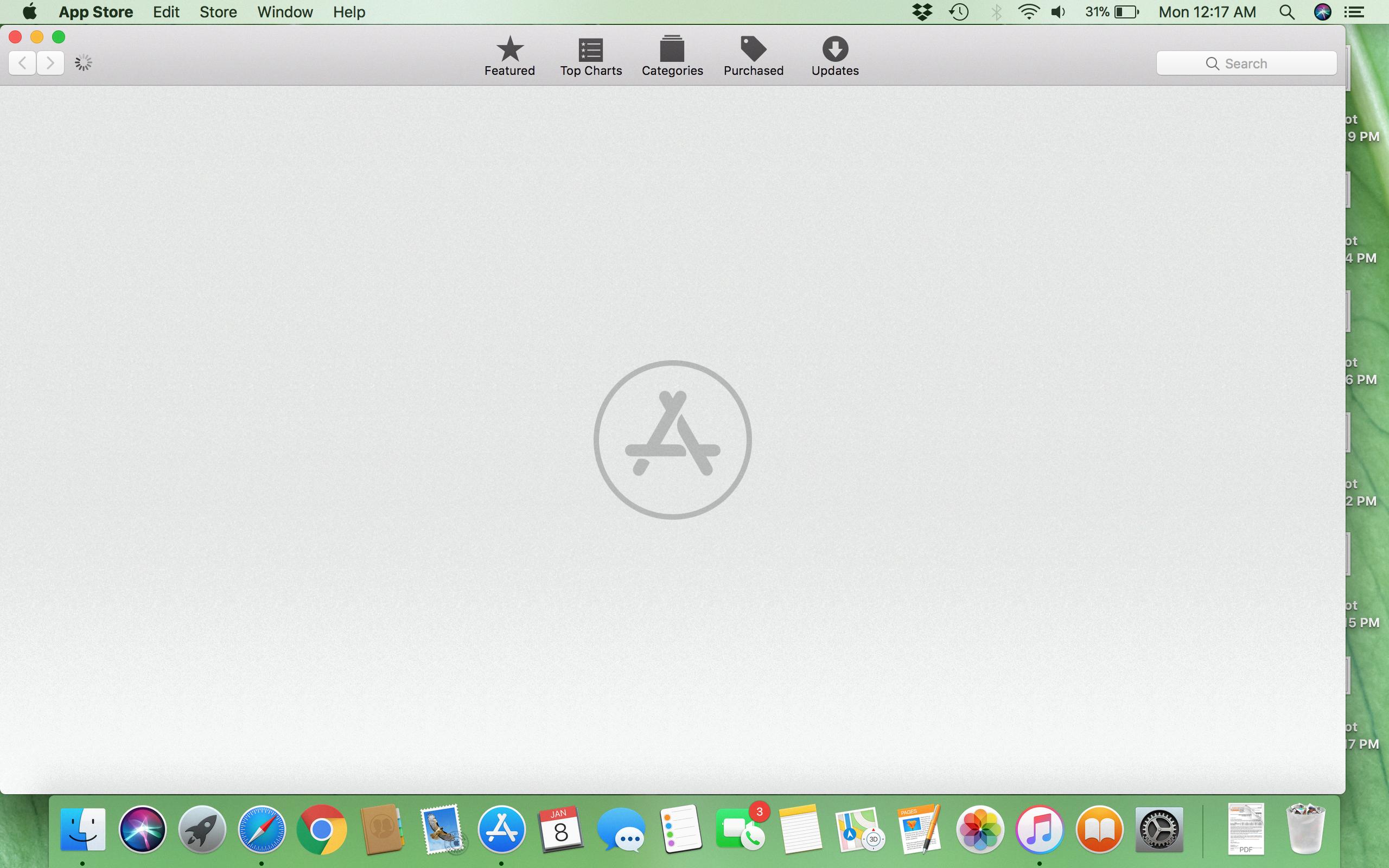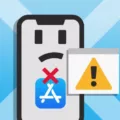If you are a Mac user and have encountered a situation where your App Store is blank or not loading properly, you are not alone. This frustrating issue can happen for various reasons, but luckily, there are several solutions you can try to get your App Store back up and running smoothly. In this article, we will explore some of the common causes of a blank App Store on Mac and how to fix them.
One of the first things you can try is to force quit and restart the App Store. This simple step can often resolve minor glitches and refresh the app. To do this, click on the Apple logo at the top left of your desktop, select “Force Quit,” locate the App Store, and click “Force Quit.” Once you’ve done this, relaunch the App Store and try updating your apps again.
If force quitting and restarting the App Store doesn’t solve the issue, another potential culprit could be incorrect date and time settings. Open the System Preferences on your Mac and navigate to the “Date & Time” section. Make sure the option to set the date and time automatically is enabled. If it’s already enabled, you can try disabling it, wait a few seconds, and then re-enable it. This can sometimes help refresh the connection to the App Store servers.
Another possible solution is to check the status of the App Store. Sometimes, Apple’s system may experience outages or maintenance, causing the App Store to be temporarily unavailable. To check the status, visit the Apple system status page and look for the Mac App Store. If the circle next to it is green, the service is running fine. However, if it’s red, there may be an ongoing issue, and you will need to wait until it is resolved.
In some cases, the blank App Store issue may be related to Apple’s servers experiencing downtime. This can happen during server maintenance or other technical difficulties. To check for any Apple system updates or server issues, you can visit the Apple System Status page. If there is an ongoing server issue, it’s best to wait until it is resolved before attempting to use the App Store again.
Lastly, if none of the above solutions work, you can try disabling Location Based iAds in your Mac’s privacy settings. To do this, go to System Preferences, select “Privacy,” then “Location Services.” Scroll down to find “System Services” and click on it. locate “Location Based iAds” and turn it off. This can sometimes resolve any conflicts related to location services that may be affecting the App Store.
Encountering a blank or non-loading App Store on your Mac can be frustrating, but there are several steps you can take to resolve the issue. Try force quitting and restarting the App Store, check your date and time settings, verify the App Store status, and consider any ongoing Apple server maintenance. If all else fails, disabling Location Based iAds may help. Remember to stay patient and keep an eye on Apple’s system status for any updates.
How Do You Fix The Blank App Store On Your Mac?
To fix the issue of a blank App Store on your Mac, you can try the following steps:
1. Quit and restart the App Store: Force quitting the App Store app and then restarting it can often resolve the problem. To do this, click on the Apple logo located at the top left corner of your desktop, then choose “Force Quit” from the drop-down menu. In the Force Quit Applications window, locate and click on the “App Store” and then click on the “Force Quit” button.
2. Clear App Store cache: Clearing the cache of the App Store may also help in resolving the blank screen issue. Open the Finder on your Mac, then click on the “Go” menu located at the top of the screen. From the drop-down menu, select “Go to Folder” and enter the following path: ~/Library/Caches/com.apple.appstore/. Once you are in the App Store cache folder, select all the files and folders inside it, and move them to the Trash. Empty the Trash to delete the cache files.
3. Sign out and sign back into the App Store: Sometimes, signing out of your App Store account and then signing back in can fix the problem. Open the App Store, click on the “Store” menu located at the top of the screen, and select “Sign Out.” After signing out, sign back into your App Store account by clicking on the “Store” menu and selecting “Sign In.”
4. Update macOS: Ensure that your Mac is running the latest version of macOS. Click on the Apple logo at the top left of your desktop and select “System Preferences.” In the System Preferences window, click on “Software Update” and check for any available updates. If updates are available, install them and restart your Mac.
5. Reset NVRAM/PRAM: Resetting the NVRAM (non-volatile random-access memory) or PRAM (parameter random-access memory) can sometimes resolve issues with the App Store. Shut down your Mac, then turn it back on and immediately press and hold the Command + Option + P + R keys on your keyboard. Keep holding the keys until you hear the startup sound for the second time, then release them.
If none of these steps resolve the issue, you may need to contact Apple support for further assistance.

Why is Your App Store Blank?
There can be several reasons why your App Store might appear blank. Let’s explore some possible causes and their solutions:
1. Poor internet connection: Ensure that you have a stable internet connection. Try switching to a different network or resetting your Wi-Fi router. If you’re using cellular data, check your signal strength.
2. App Store server issues: Occasionally, the App Store servers may experience downtime or technical difficulties. In such cases, the store may appear blank. Visit Apple’s System Status page (support.apple.com/systemstatus) to check if there are any ongoing issues with the App Store.
3. Cache and data conflicts: Clearing the cache and data of the App Store app can resolve certain issues. To do this, go to Settings > [Your Name] > iTunes & App Store > tap on your Apple ID > Sign Out. Then go to Settings > General > iPhone Storage (or iPad Storage) > locate and tap on the App Store app > Offload App. Once done, restart your device and sign back into the App Store.
4. Software update needed: Outdated iOS versions may cause compatibility issues with the App Store. Go to Settings > General > Software Update and check if there’s an available update. If yes, install it and then try accessing the App Store again.
5. Date and time settings: Incorrect date and time settings can prevent the App Store from loading properly. Go to Settings > General > Date & Time, and ensure that “Set Automatically” is enabled. If it’s already enabled, try toggling it off and on again.
6. Restrictions enabled: If you have enabled restrictions on your device, it can restrict access to the App Store. To disable restrictions, go to Settings > Screen Time > Content & Privacy Restrictions > enter your passcode (if applicable) > toggle off the restrictions for the App Store.
7. Apple ID sign-in issues: Verify that you are signed in with the correct Apple ID associated with your App Store purchases. Go to Settings > [Your Name] and check your Apple ID details. If you’re signed in with the correct account, try signing out and signing back in.
If none of the above solutions work, it may be helpful to contact Apple Support for further assistance. They can provide more specific troubleshooting steps or guide you through a resolution to your particular issue.
Why is Your App Store Not Opening On Mac?
There could be several reasons why your App Store is not opening on your Mac. Here are some possible causes:
1. Internet connection issues: Ensure that your Mac is connected to a stable and working internet connection. If your internet connection is weak or unstable, it may prevent the App Store from opening.
2. Outdated macOS version: Check if your Mac’s operating system is up to date. If you are using an older version of macOS that is no longer supported by the App Store, it may cause compatibility issues and prevent the App Store from opening.
3. App Store server issues: Occasionally, the App Store may experience server problems or undergo maintenance, resulting in temporary unavailability. You can check the Apple System Status page to see if there are any ongoing issues with the App Store.
4. Cache and temporary files: Accumulated cache and temporary files can sometimes interfere with the proper functioning of the App Store. Clearing these files might help resolve the issue. You can do this by going to the “Finder” menu, selecting “Go,” then “Go to Folder,” and entering “~/Library/Caches/com.apple.appstore/”. Delete the files in this folder.
5. Corrupted App Store preferences: If the preferences for the App Store have become corrupted, it may prevent the application from opening. Resetting the App Store preferences might help. Go to the “Finder” menu, select “Go,” then “Go to Folder,” and enter “~/Library/Preferences/”. Locate the file named “com.apple.appstore.plist” and move it to the Trash. Restart your Mac and try opening the App Store again.
6. Third-party software conflicts: Some third-party software installed on your Mac might conflict with the App Store and prevent it from opening. Try temporarily disabling or uninstalling any recently installed software to see if it resolves the issue.
If none of these solutions work, it may be worth contacting Apple Support for further assistance in troubleshooting the specific problem with your App Store.
Conclusion
If you are experiencing issues with the Mac App Store, there are several steps you can take to troubleshoot the problem. First, try force quitting the App Store app and then reopening it. This simple action can often resolve minor glitches and get the app running smoothly again.
If you continue to encounter errors or issues, it is important to check the date and time settings on your Mac. Ensuring that the date and time are set automatically can help resolve any conflicts that may be preventing the App Store from functioning properly.
Additionally, it is worth checking the App Store status to see if there are any reported outages or disruptions in service. Apple’s system status page can provide real-time information on the status of various Apple services, including the Mac App Store. If there is a known issue, it is best to wait for Apple to resolve it before attempting to use the App Store again.
If none of these steps resolve the problem, it is possible that there may be a larger issue with Apple’s servers. Checking the Apple System Status page can provide insight into any ongoing server maintenance or disruptions that may be affecting the App Store. In such cases, it is best to be patient and wait for Apple to resolve the issue before attempting to use the App Store again.
Troubleshooting issues with the Mac App Store can be frustrating, but by following these steps and staying aware of any reported outages or disruptions, you can increase your chances of resolving the problem and getting back to using the App Store as normal.








